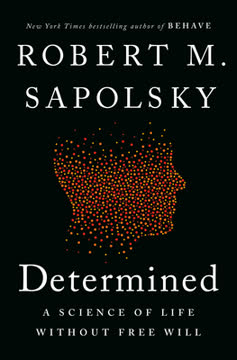Key Takeaways
1. Progress is real: Life has improved dramatically across multiple dimensions
The world does agree on these values. In the year 2000, all 189 members of the United Nations, together with two dozen international organizations, agreed on eight Millennium Development Goals for the year 2015 that blend right into this list.
Quantifiable improvements. Life expectancy, health, wealth, safety, knowledge, and freedom have all increased substantially over time. Global life expectancy rose from 29 years in 1770 to 71.4 years in 2015. Extreme poverty has fallen from 90% of the global population in 1800 to less than 10% today. Child mortality dropped from 43% in 1800 to 4.3% in 2015.
Widespread benefits. These gains are not limited to developed countries but have spread globally. Even in the poorest regions, people today live longer, healthier, and more prosperous lives than their ancestors. The pace of progress has accelerated in recent decades, with developing countries catching up rapidly to developed world standards.
Overlooked improvements. Despite common perceptions, violence has declined, democracy has spread, and human rights have expanded. Environmental problems, while serious, are increasingly being addressed through technology and policy. These positive trends are often overlooked due to cognitive biases and media focus on negative events.
2. The Enlightenment ideals drive human progress
The Enlightenment has worked—perhaps the greatest story seldom told. And because this triumph is so unsung, the underlying ideals of reason, science, and humanism are unappreciated as well.
Core principles. The Enlightenment emphasized reason, science, humanism, and progress. These ideals reject dogma, promote skepticism, value human welfare, and believe in the possibility of improving the human condition through rational thought and action.
Ongoing relevance. While often taken for granted, Enlightenment values continue to drive progress in the modern world. They underpin scientific research, technological innovation, democratic governance, and human rights movements. The expansion of knowledge and critical thinking skills enables societies to solve problems and improve living conditions.
Challenges to progress. Counter-Enlightenment movements, including religious fundamentalism, authoritarian populism, and postmodern relativism, pose threats to these ideals. Maintaining and spreading Enlightenment values is crucial for continued human progress.
3. Science and reason are powerful tools for solving problems
People have also lost their comforting faith in the goodness of their institutions. The historian William O'Neill entitled his history of the Baby Boomers' childhood years American High: The Years of Confidence, 1945–1960. In that era, everything seemed great.
Scientific method. The application of reason and the scientific method has led to enormous advances in knowledge and problem-solving capacity. This approach involves forming hypotheses, gathering evidence, and revising theories based on new information.
Technological progress. Scientific knowledge has enabled technological breakthroughs that have transformed human life. Examples include:
- Medical advances (vaccines, antibiotics, surgical techniques)
- Agricultural innovations (fertilizers, crop breeding, mechanization)
- Information technology (computers, internet, smartphones)
Overcoming cognitive biases. While humans are prone to cognitive biases and logical fallacies, scientific thinking provides tools to overcome these limitations. Critical thinking, statistical analysis, and peer review help separate fact from fiction and drive evidence-based decision-making.
4. Economic growth and technological innovation reduce poverty and improve lives
A decline is not the same thing as a disappearance. (The statement "x > y" is different from the statement "y = 0.") Something can decrease a lot without vanishing altogether.
Wealth creation. Economic growth, driven by market economies and technological innovation, has lifted billions out of poverty. Global GDP per capita has grown nearly 15-fold since 1820, adjusting for inflation and purchasing power.
Improving living standards. As societies become wealthier, they can invest in:
- Better healthcare and nutrition
- Education and skill development
- Infrastructure and public services
- Environmental protection
Technological benefits. Innovations reduce costs and increase access to goods and services that improve quality of life. Examples include:
- Affordable lighting (43,000-fold improvement in affordability since 1800)
- Labor-saving home appliances
- Global communications and information access
5. Violence and war have declined significantly over time
So has the world really gone steadily downhill during these decades? Keep figure 4-1 in mind as we examine the state of humanity in the chapters to come.
Long-term decline. Despite perceptions of increasing violence, rates of homicide, war deaths, and other forms of violence have decreased dramatically over centuries and decades. The chance of dying in war or from interpersonal violence is far lower today than in the past.
Reasons for decline:
- Stronger state monopoly on violence
- Expansion of trade and economic interdependence
- Spread of democracy and human rights norms
- Improved law enforcement and conflict resolution mechanisms
Remaining challenges. While violence has declined overall, significant conflicts and crime persist in some regions. Terrorism, while highly publicized, accounts for a tiny fraction of global violence. Continuing efforts to promote peace and reduce violence are necessary.
6. Democracy and human rights have expanded globally
The uncanny assemblage of scientific, institutional, legal, and social forces all pushing to strip government of its power to kill makes it seem as if there really is a mysterious arc bending toward justice.
Democratic growth. The number of democracies in the world has increased from 12 in 1945 to 103 in 2015, now covering 56% of the world's population. Even many non-democratic countries have become less repressive over time.
Human rights improvements:
- Abolition of slavery and forced labor
- Expansion of women's rights and gender equality
- Increased protections for minorities and LGBTQ+ individuals
- Decline in use of torture and capital punishment
Ongoing struggles. While significant progress has been made, human rights abuses and democratic backsliding continue in many parts of the world. Vigilance and ongoing efforts are required to maintain and expand these gains.
7. Education and knowledge empower individuals and societies
Progress can take place when the reversals in a positive trend become less frequent, become less severe, or, in some cases, cease altogether.
Rising education levels. Global literacy rates have increased from 12% in 1820 to over 86% today. Average years of schooling have risen dramatically, from 2 years in 1870 to 8.6 years in 2015. Higher education enrollment has also expanded significantly.
Benefits of education:
- Increased economic productivity and innovation
- Better health outcomes and decision-making
- Greater civic participation and democratic engagement
- Reduced violence and conflict
Knowledge accessibility. The internet and digital technologies have democratized access to information. Online courses, educational videos, and digital libraries make knowledge available to billions of people at little or no cost.
8. Environmental challenges can be addressed through human ingenuity
The beauty of scientific progress is that it never locks us into a technology but can develop new ones with fewer problems than the old ones.
Environmental Kuznets Curve. As societies become wealthier, they tend to prioritize environmental protection and develop cleaner technologies. Many forms of pollution have decreased in developed countries despite economic growth.
Technological solutions:
- Renewable energy (solar, wind, nuclear)
- Energy efficiency improvements
- Agricultural innovations reducing land and water use
- Waste reduction and recycling technologies
Policy approaches. Market-based policies like carbon pricing, combined with targeted regulations and investments in research and development, can drive innovation and reduce environmental impacts while maintaining economic growth.
9. Happiness and well-being have increased, despite common perceptions
You might think that the question is so subjective and culturally relative as to be forever unanswerable. In fact, it's one of the easier questions to answer.
Rising life satisfaction. Contrary to popular belief, global surveys show that people in most countries are becoming happier over time. This correlates strongly with rising incomes and improvements in health, education, and personal freedom.
Factors influencing happiness:
- Meeting basic needs (food, shelter, safety)
- Social connections and relationships
- Sense of purpose and meaning
- Personal autonomy and control
Challenges to well-being. While overall trends are positive, mental health issues, inequality, and social isolation remain concerns in many societies. Addressing these challenges can further improve human well-being.
10. Existential risks exist but can be mitigated through rational approaches
How should we think about catastrophic threats? Let's begin with the greatest existential question of all, the fate of our species.
Potential risks:
- Nuclear warfare
- Climate change
- Pandemics
- Artificial intelligence
- Asteroids and natural disasters
Rational risk assessment. While these risks are serious, they are often exaggerated or misunderstood. Careful analysis and evidence-based approaches are necessary to evaluate and address potential threats.
Mitigation strategies:
- International cooperation and governance
- Scientific research and technological development
- Robust institutions and decision-making processes
- Public education and engagement
Reasons for optimism. Human ingenuity and problem-solving capabilities have overcome numerous challenges in the past. Continued progress in science, technology, and social institutions provides tools to address future risks.
Human progress is real and substantial, driven by Enlightenment ideals of reason, science, and humanism. While significant challenges remain, the overall trajectory of human well-being is positive. By understanding and appreciating this progress, we can work to sustain and accelerate it, addressing remaining problems and potential risks through rational, evidence-based approaches.
Last updated:
FAQ
What's Enlightenment Now about?
- Focus on Enlightenment Ideals: Enlightenment Now by Steven Pinker argues for the relevance of Enlightenment principles—reason, science, humanism, and progress—in addressing contemporary challenges.
- Defense Against Pessimism: Pinker counters prevalent pessimism by presenting data showing significant progress in health, wealth, and safety, demonstrating substantial advancements despite challenges.
- Evidence-Based Approach: The book employs a wealth of data and historical context to support its arguments, making a case for optimism grounded in facts rather than ideology.
Why should I read Enlightenment Now?
- Timely Relevance: In a time of widespread disillusionment, Pinker provides a refreshing perspective that highlights human civilization's achievements.
- Comprehensive Analysis: The book covers a wide range of topics, offering insights into how various factors contribute to societal improvements.
- Inspiration for Action: By illustrating the successes of the Enlightenment, Pinker motivates readers to engage with these ideals actively.
What are the key takeaways of Enlightenment Now?
- Progress is Real: Pinker emphasizes significant progress in life expectancy, poverty reduction, and education, showing that the world has made spectacular progress in human well-being.
- Importance of Reason and Science: The book underscores the necessity of applying reason and scientific methods to solve modern problems.
- Humanism and Global Cooperation: Pinker advocates for a humanistic approach that prioritizes individual well-being over tribal or nationalistic interests.
What are the best quotes from Enlightenment Now and what do they mean?
- “Those who are governed by reason desire nothing for themselves which they do not also desire for the rest of humankind.”: This quote by Spinoza encapsulates humanism, emphasizing the interconnectedness of humanity and the moral obligation to act for the common good.
- “The Enlightenment principle that we can apply reason and sympathy to enhance human flourishing may seem obvious, trite, old-fashioned.”: Pinker argues that while these ideals may appear simplistic, they are often overlooked in contemporary discourse.
- “History shows that when we sympathize with others and apply our ingenuity to improving the human condition, we can make progress in doing so.”: This statement highlights the potential for collective action and innovation to drive societal improvements.
How does Enlightenment Now define progress?
- Empirical Measurement: Pinker defines progress as measurable improvements in health, wealth, safety, and rights, using data to illustrate these advancements over time.
- Cumulative Gains: He argues that progress is cumulative, with improvements building on one another, such as increased literacy leading to better economic outcomes.
- Moral and Ethical Dimensions: Progress also encompasses moral advancements, like the expansion of rights and freedoms, guided by a commitment to humanism.
What role does science play in Enlightenment Now?
- Foundation of Progress: Pinker argues that science is a cornerstone of human progress, providing tools and knowledge to solve problems.
- Critical Thinking: The book advocates for scientific thinking to combat misinformation and irrational beliefs, essential for addressing contemporary challenges.
- Innovation and Solutions: Pinker highlights how scientific discoveries lead to innovations that improve human life, contributing to advancements in medicine, agriculture, and technology.
How does Enlightenment Now address the concept of humanism?
- Focus on Individual Well-Being: Pinker defines humanism as a moral framework prioritizing individual well-being over collective identities like race or nation.
- Expansion of Sympathy: The book discusses the idea that human sympathy can extend beyond familial and tribal boundaries to encompass all of humanity.
- Critique of Dogma: Pinker critiques ideologies prioritizing group identity over individual rights, advocating for a humanistic approach recognizing every person's inherent dignity and rights.
What existential threats are discussed in Enlightenment Now?
- Nuclear Weapons: Pinker highlights the ongoing threat posed by nuclear weapons, emphasizing the need for global cooperation to prevent their proliferation.
- Climate Change: The book addresses climate change as a significant existential threat, advocating for proactive measures to mitigate its effects.
- Technological Risks: Pinker discusses potential dangers of emerging technologies, such as AI and biotechnology, emphasizing ethical considerations and regulatory frameworks.
How does Enlightenment Now propose to tackle climate change?
- Carbon Pricing: Pinker advocates for carbon pricing mechanisms to incentivize reductions in greenhouse gas emissions.
- Investment in Renewable Energy: The book emphasizes the need for increased investment in renewable energy sources to transition away from fossil fuels.
- Technological Innovation: Pinker stresses the importance of fostering technological innovation to develop solutions for carbon capture and sustainable energy production.
How does Enlightenment Now relate to current political issues?
- Populism and Anti-Enlightenment Movements: Pinker critiques the rise of populism and its rejection of Enlightenment values, arguing these movements threaten democratic institutions.
- Science and Policy: The book emphasizes evidence-based policy-making, advocating for a return to rational discourse in political debates.
- Civic Responsibility: Pinker calls for greater civic engagement and responsibility among citizens, urging individuals to uphold Enlightenment values in their communities.
What is the significance of the Enlightenment ideals in Enlightenment Now?
- Foundation for Progress: Pinker argues that Enlightenment ideals are foundational for understanding and improving the human condition.
- Timeless Relevance: The book posits that these ideals remain relevant in today's world, needing defense against contemporary skepticism.
- Call to Action: Pinker encourages readers to actively engage with Enlightenment principles, contributing to ongoing progress and societal betterment.
How does Enlightenment Now counter common pessimistic narratives?
- Debunking Declineism: Pinker challenges the narrative that society is in decline by presenting evidence of progress across various domains.
- Highlighting Solutions: The book emphasizes that many of today’s challenges are solvable through reason, science, and cooperation.
- Promoting Optimism: Pinker advocates for a more optimistic view of the future, suggesting that understanding progress can inspire action and innovation.
Review Summary
Enlightenment Now receives mixed reviews. Many praise Pinker's comprehensive data analysis showing human progress, citing improved health, wealth, and safety. Critics argue he oversimplifies complex issues and downplays ongoing problems. Some find his optimism refreshing, while others see it as naive. The book's core argument that Enlightenment values have driven positive change is generally accepted, though its dismissal of modern challenges is contested. Readers appreciate Pinker's clear writing and extensive research, even if they don't agree with all his conclusions.
Similar Books










Download PDF
Download EPUB
.epub digital book format is ideal for reading ebooks on phones, tablets, and e-readers.










